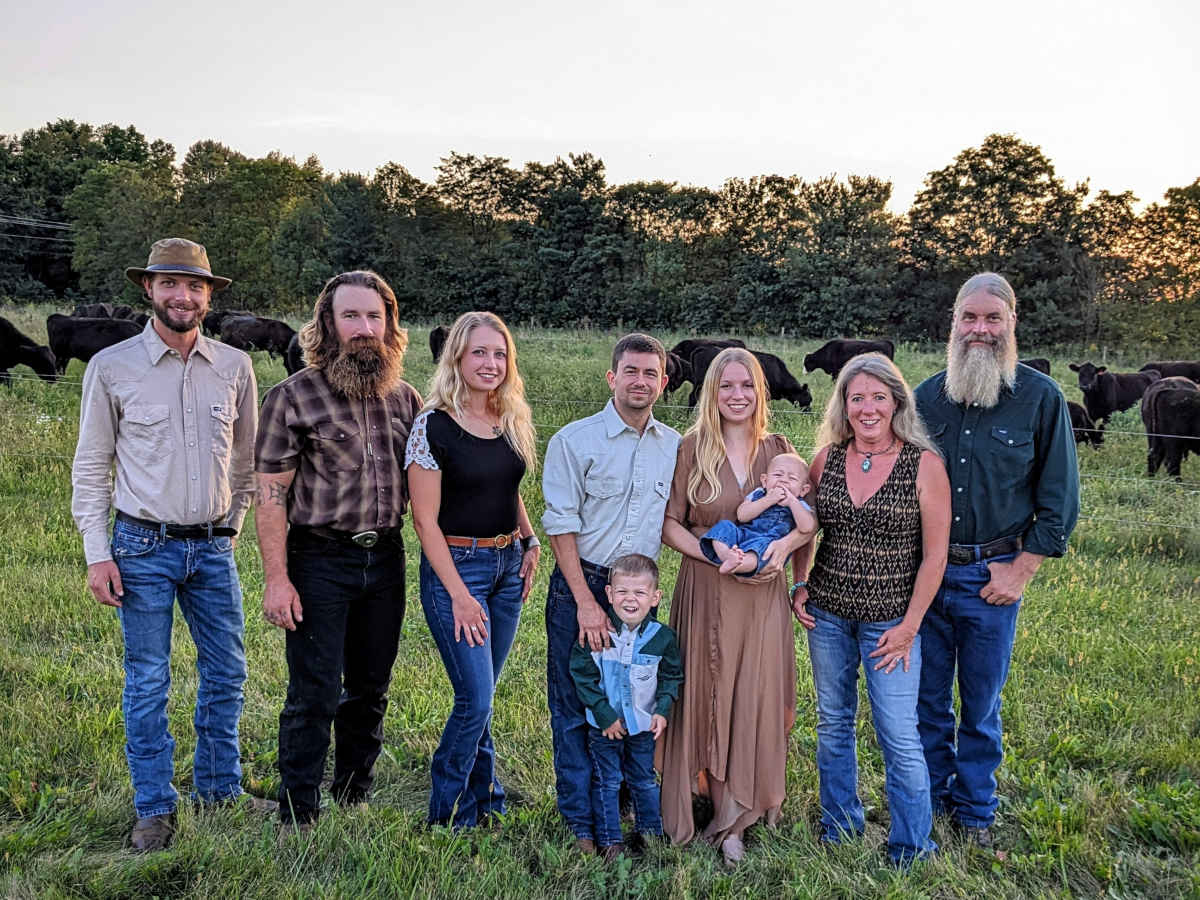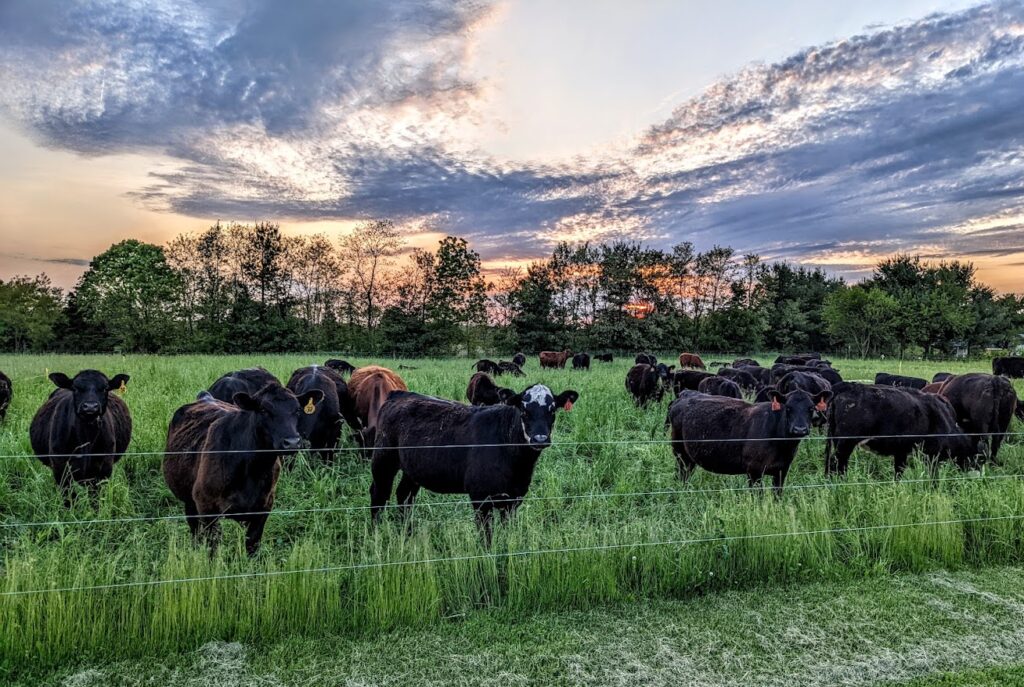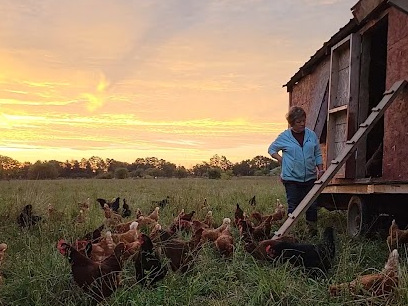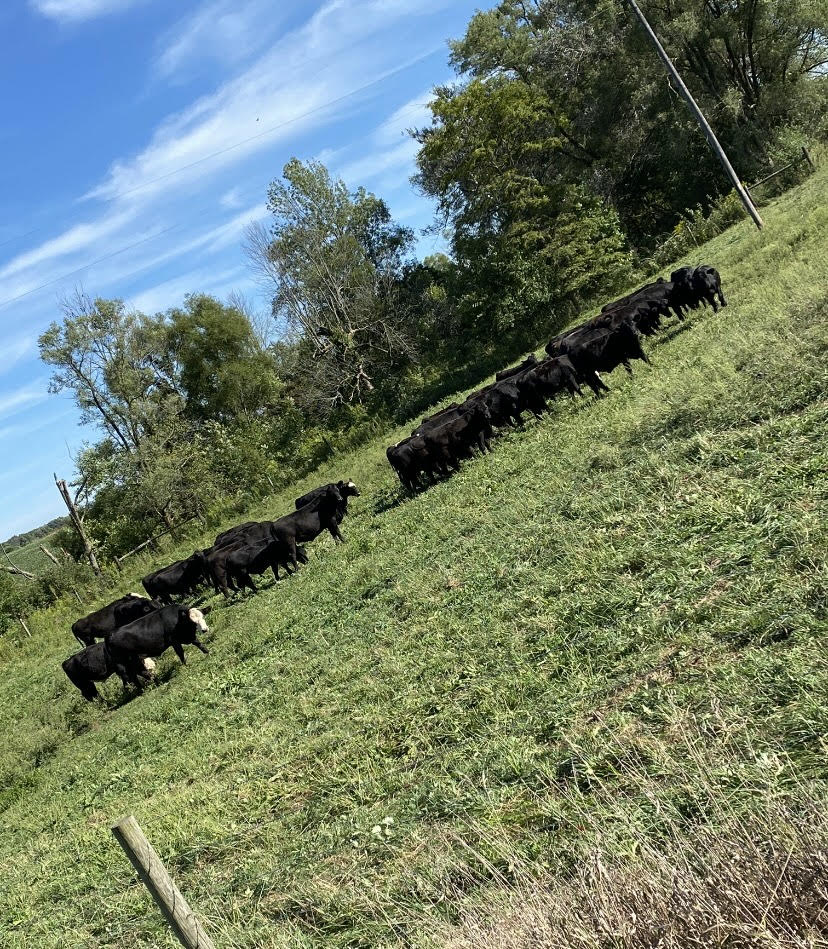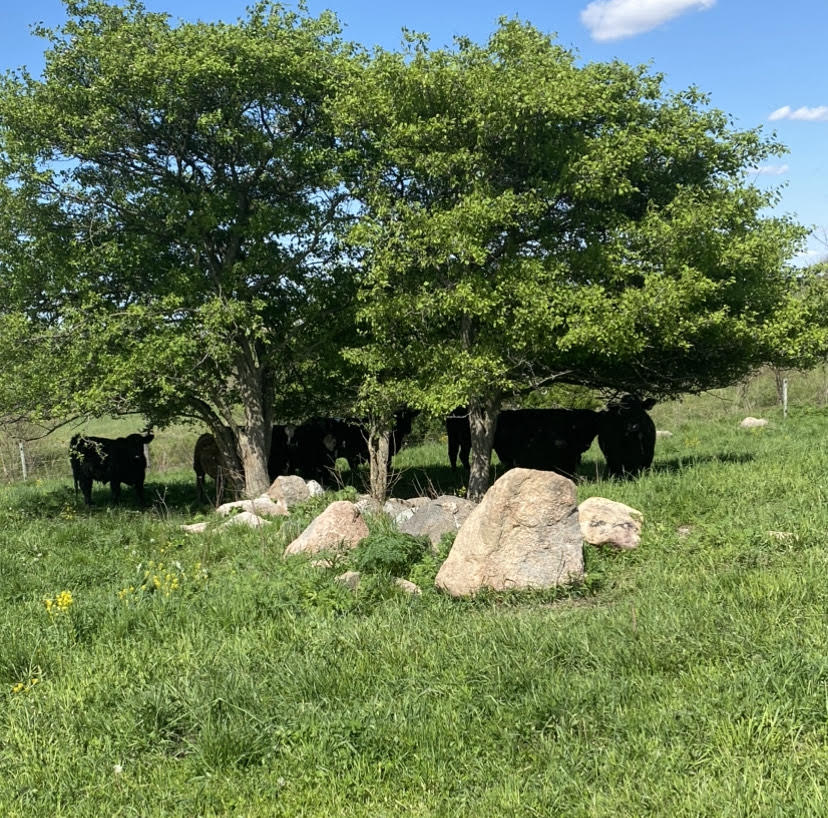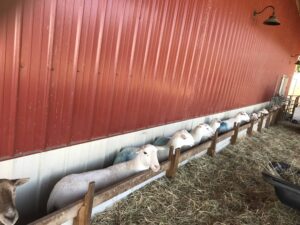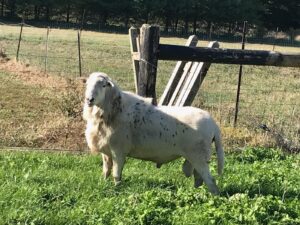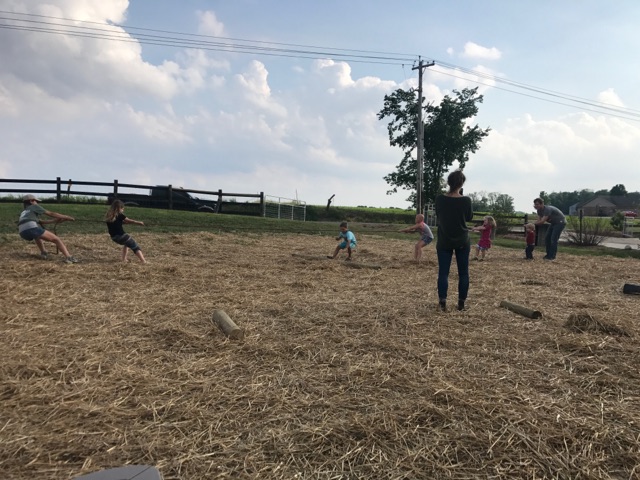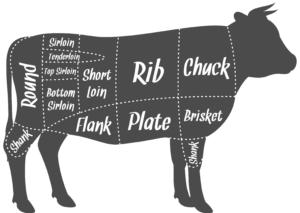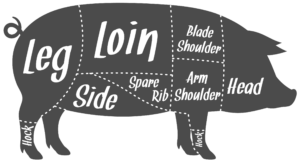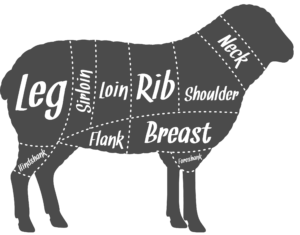This week’s CSA has the makings of some wonderful Chicken and Noodles over mashed potatoes. With the produce season skyrocketing, you also have got a large variety of local, healthful produce to supplement into your diet.
For instructions on utilizing a whole chicken, without wasting any of it, I found it useful to refer back to an older article written by Jessica Smith, when the farm was more of an ambitious hobby, Erick was still working in corporate America, and I was the little kid enjoying it all!
“A Whole Chicken! How many would I need? What would I do with it?
As you know, there is more to a chicken than the breast. Today many of us have gotten used to buying only the breasts, often injected for flavor since they lack it on their own. We have to learn or relearn what to do with the whole chicken. You can eat organically for the same price as eating what is now the standard American diet consisting of processed foods. The secret is in learning how to cook with whole foods and wasting very little. When thinking about the chicken, the key is to learn how to use the whole thing. So many throw out, what is for me, the most useful part. Broth is easy to make from the bones you would normally throw out. Yet if you buy the same amount of broth from United Natural Foods you would pay the same for the broth as you do for a whole chicken. Can we then say that the meat you eat is free? Let’s look at some ways to make the most out of the good organic, pastured chickens you hope to have this season. Let’s look at what to do with this great meat.
There are many different ways to cook a chicken. You can bake it, fry it, grill it, or put it in a crock pot. I admit to having two modern gadgets that I have used and liked. The first is a Rotisserie. It locks in all the juices of the chicken and results in a favorable product. I just season with salt, pepper, oil, vinegar, and herbs of choice. Unfortunately mine can only do 1 chicken so I then started using a modern pressure cooker. This has become my most used kitchen gadget. In a 6 quart size cooker I can fit 2 small chickens whole or 2 large chickens cut up. It reduces the cooking time down to under 15 minutes. Because pressure is used, all the seasonings are forced through the meat. You can brown the meat first but you don’t have to. Now my family has grown to the size that I always cook at least 3 chickens at a time so they are usually roasted or baked in the oven. Occasionally I can fit them in my large crockpot. You can vary this meal by just changing the spices used. For example, you could have barbecued chicken, teriyaki chicken, honey mustard chicken, herbed chicken, maple chicken. However you cook your chicken, the meal where chicken is the main course I call meal 1. After this meal, I cut off big leftover chunks of chicken for green salads topped with chicken, chicken salad, chicken enchiladas, chicken and broccoli casserole, chicken curry, creamy herbed chicken over rice, chicken pot pie, and other dishes with chicken as a side item. This is meal number 2. The last big meal is soup. I save all the bones to put in a pot for soup. My broth is very simple; chicken bones covered with water, bay leaves, peppercorns, 2 Tbsp salt and simmered for a couple hours (You can also add misc vegetable pieces by keeping a bag in the fridge to hold the carrot, celery, and onion butts as we call them, the unused portions). I used to cook this broth in a spaghetti pot so once done I could lift the strainer and have the broth separated. The meat will fall of the bones and all you have to do is sort through it. (OK I admit it takes a little time to get used to this process.) I now use my pressure cooker because you can make excellent broth in 30 minutes. I then have the choice of straining through cloth for a clear broth or through a colander, which is what I generally do. Now you just have to throw back in the chicken pieces and any veggies you want. Add some egg noodles, which we are now selling, and you have a wonderful meal number 3. I often change this soup later by simply adding milk. It serves as the base to all different kinds of soup. However, I use this broth in more than just soup. I use whole grains which benefit from the additional flavor and protein of chicken broth. Brown Rice and all of my beans are cooked in broth. It helps make wonderful mashed potatoes. In fact, broth is the base of most of my cooking. Not only does it add to the flavor, but it also boosts the nutrient value. A good bone stock is packed full of excellent vitamins and minerals.
I hope this account from Jessica’s kitchen has given you some new ideas. I don’t often use cookbooks at this stage in my kitchen career but I will work on collecting recipes for you to try. It does take a commitment to go from using just the chicken breasts to using the whole chicken, but once learned it becomes second nature. I wish you blessings on your journey to eating healthier, more environmentally friendly foods.”
Written by Jessica Smith
